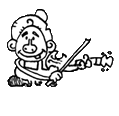Technique Lesson Template – no restriction codes
{opening text}
{video embed}
Video loops 🔁
{practice master video code}
{pm index code, first exercise}
Learning chunks
Preparation
Review and practice these lessons:
Play a {key} note with a {key} drone. Allow your breath, body, and mind to relax. Listen to the blend of your fiddle with the drone, and enjoy the sound.
G drone
D drone
A drone
E drone
Next, warm up with the {scaleName} scale and phrases from the tune (once you’ve learned it) using the drone above.
{scale tabs}
Exercise 1
{sheet music & mp3 snippets}
Exercise 2
{sheet music & mp3 snippets}
Exercise 3
{sheet music & mp3 snippets}
Full sheet music
{full sheet music png}
{full sheet music pdf}
Sheet music video
Those of you who are learning to read sheet music can follow long with this video. It’s a way to intuitively learn this. Learn more here: Intuitive Note-Reading.
Take-home message
{text}
Practice tracking
Return to top of >>
Further learning
If you want to get better at {topic to improve}, then take this lesson: {lessonLink}
